Blog
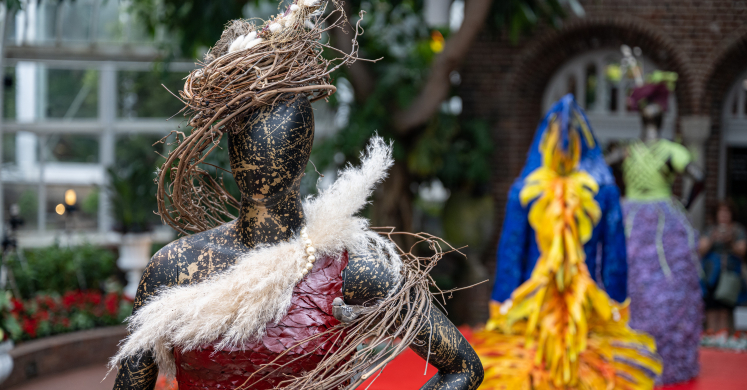
Home Grown Fashion
Guests spent the summer being wowed by our glasshouse full of fabulous fashions! Many of the designs were created by local designers and students from Billy Porter’s alma maters, CMU and CAPA high school in Pittsburgh. Aside from these, four creations came from the hard work and creativity of Phipps staff. These pieces use materials found in the conservatory, promoting the ideals of repurposing, innovative gardening practices and sustainable fashion!
In the South Conservatory amid a runway of radiant red flowers, there are three topiaries designed and constructed by the horticulture staff at Phipps. The process began with a brainstorming session including Associate Director of Exhibits Jordyn Melino, Exhibit Associate Mary Lou Linton-Morningstar and no less than four of our gifted horticulturists. The group began by choosing different dried plant materials to use in construction. Inspired by their materials, the group landed on the theme of nature with each of the topiaries representing an aspect of nature: earth, water and air. To make each piece beautifully unique, they decided to vary the silhouettes on each figure: a fitted dress, a full ball gown and a suit. The group effort has proven successful as guests continue to marvel at each piece rocking the runway!
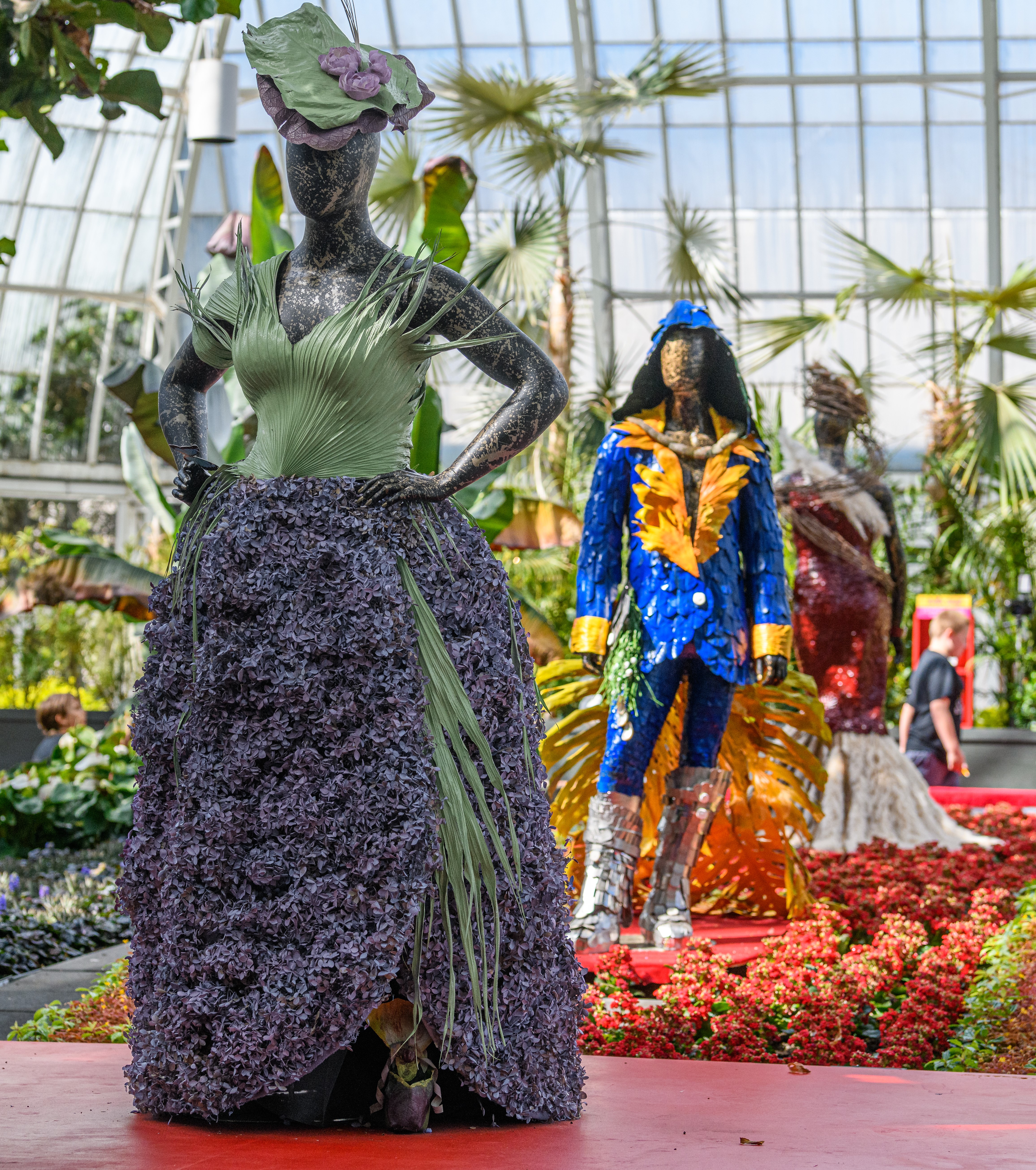
Constructing with plant materials can be challenging, especially with the warm and humid summer conditions. It took horticulture staff, Mary Lou Linton-Morningstar, Abby Anderson, Laura Schoch and Cat Waddington, four months to complete the construction of the pieces. During the process they had to be adaptable with their designs. For instance, “Hort Couture,” the full ball gown, was originally planned to have a high collar using the palm fronds, however as they worked with the plant material, they realized that the bodice should hug the mannequin creating a stunning breast plate with woven fronds in the back to add a sophisticated touch. This is the first gown that you see as you enter the South Conservatory, representing the earth. It is comprised of dried plant materials in gorgeous shades of purple and green. The skirt is dried hydrangea heads, the bodice is made of woven palm fronds as well as a variety of other plant materials to create a full and fancy ball gown.
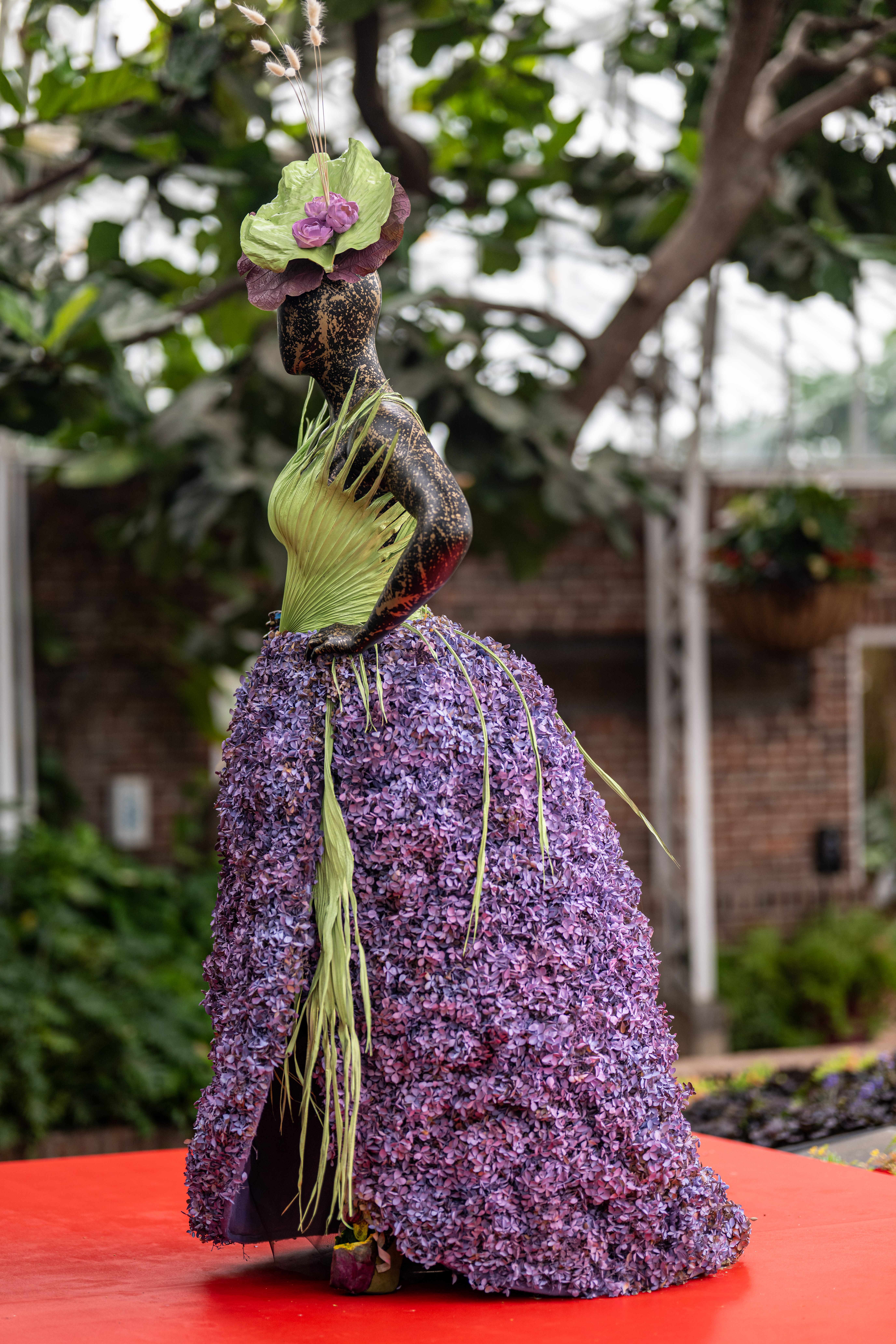
“Swim Suit” is the title of the middle design, representing the element of water. The dapper suit is constructed using magnolia leaves, staghorn ferns as well as other plant materials. Influenced by colorful tetra fish, bright yellow swiss cheese plant leaves trail off the back, resembling a fish tail. The design also incorporates other items found at the conservatory; the boots are made of upcycled plant ID tags, which proved challenging as “the extended periods of heat made it difficult to maintain the boot structure,” said Mary Lou.
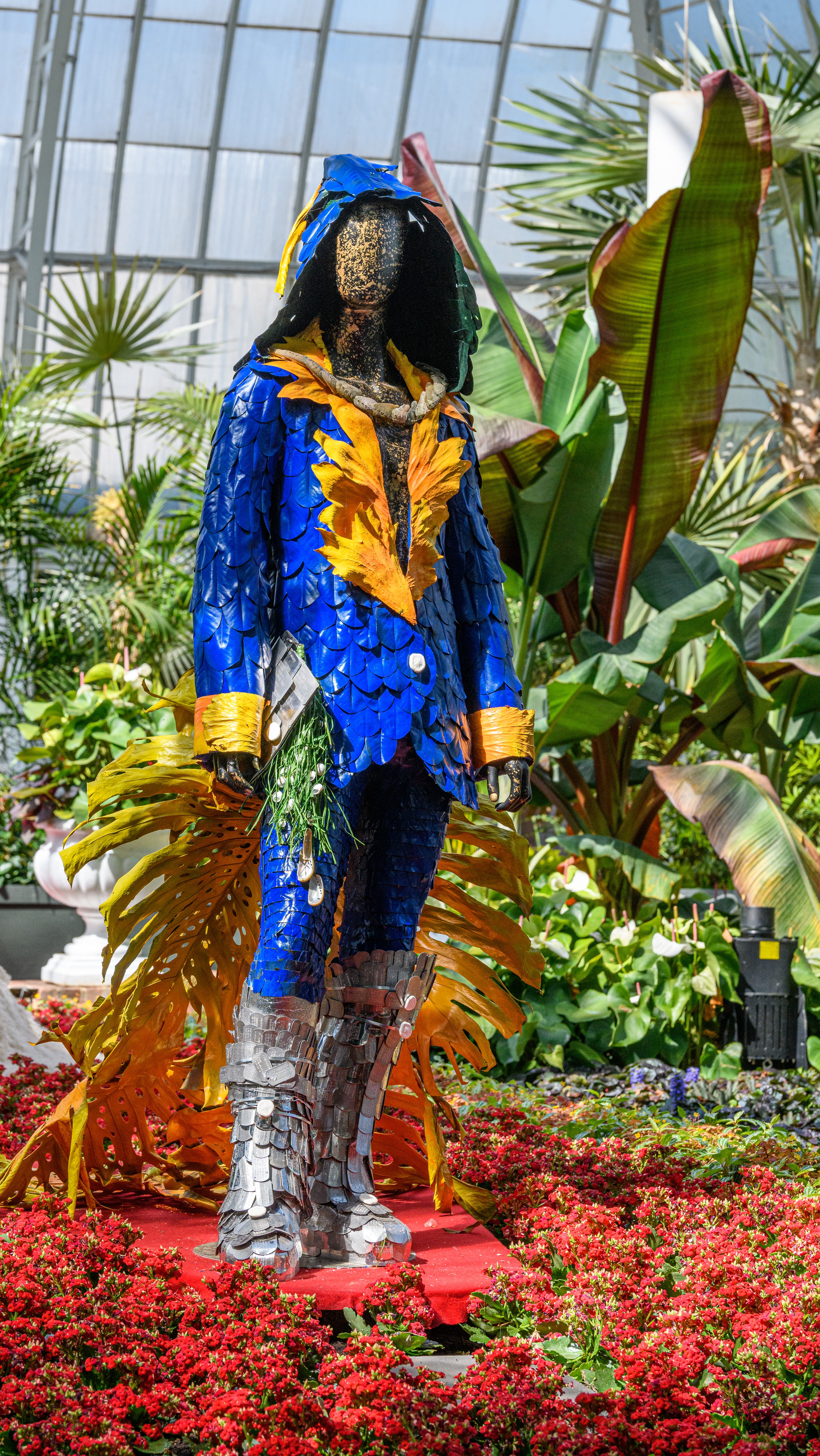
The third silhouette, “High Fashion,” represents the element of air. This topiary is inspired by the Scarlett Flycatcher, a bright red songbird, native to Bolivia. The formfitting dress features grapevines that create a head piece representing a nest, around the body is another swirl of vines, containing birds, that appear to be flying around the figure. Pampas grass and pheasant tailfeathers are used to complete this chic look!
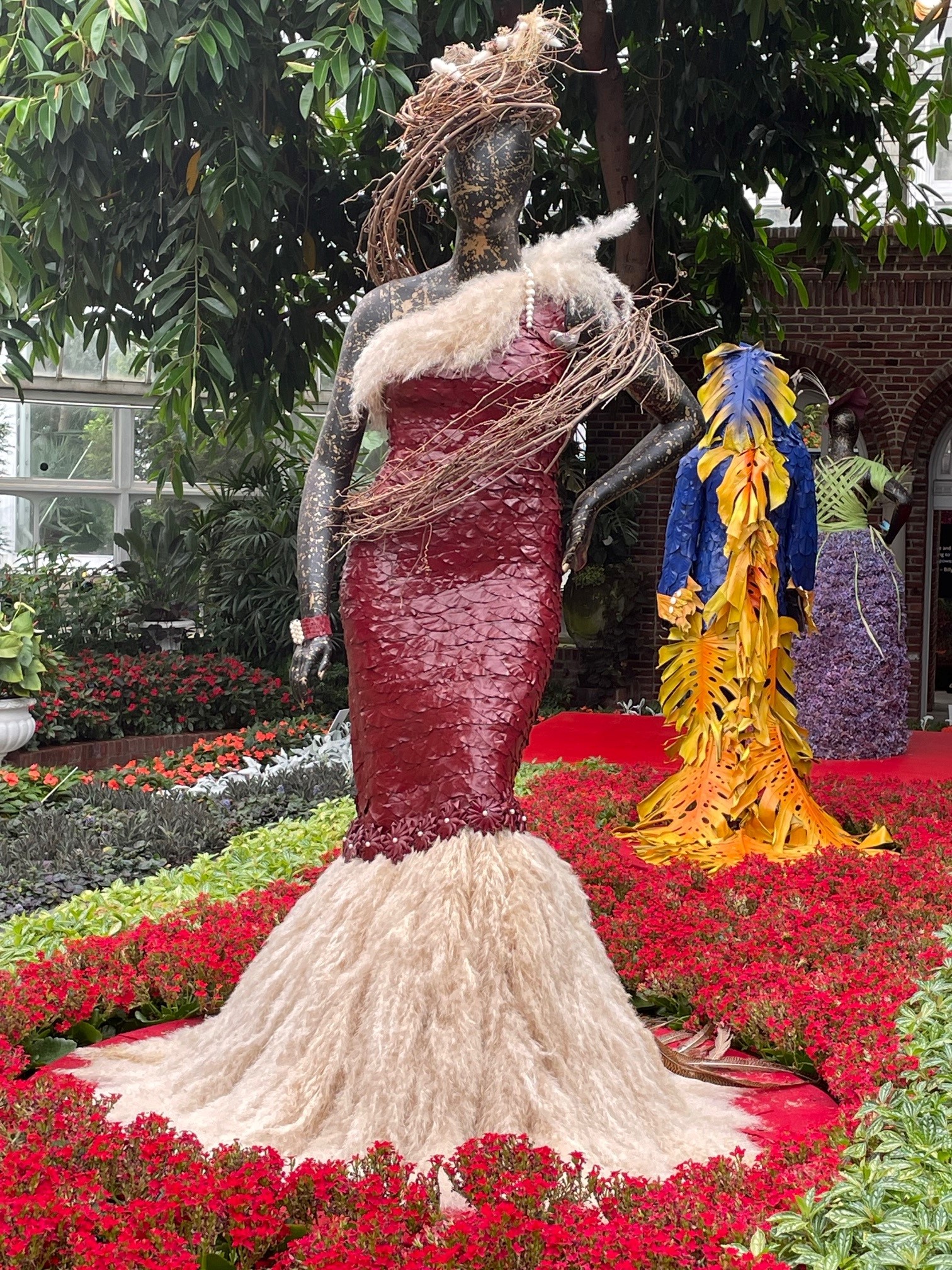
Another Phipps original is featured in the Serpentine Room, the living star of the show is called “Salad Dressing.” This high fashion wonder is an actual living garden! The display is a working hydroponics system, complete with a living lettuce skirt and fish swimming about. Hydroponics allow plants to grow in circulating water with nutrients that the plants need while using 10% less water than growing in soil. This display is art but when used for food production the lack of soil also means no weeds and very few pests on the vegetation, making it an efficient and ecologically sound form of farming. “Salad Dressing” was the idea of our Director of Facilities Peter Thompson, who wanted to contribute a unique creation that showcased Phipps commitment to sustainability.
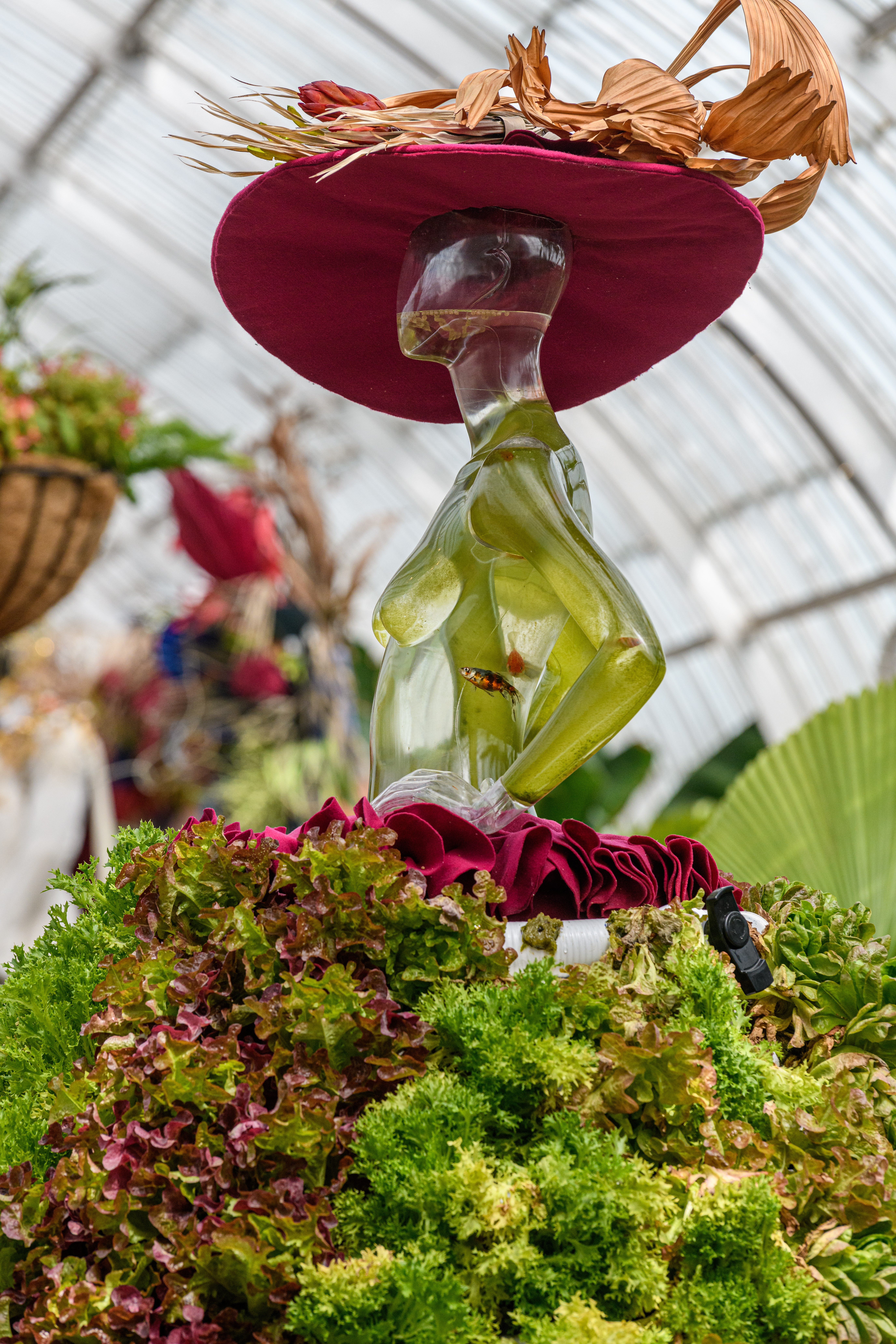
Both the design and its construction were a time-consuming process. Peter consulted outside contractors and sought advice from many professionals to bring his vision to life! He said a major turning point was when his fish supplier suggested running the piping on the skirt horizontally and with that advice, they were off and running! Due to the size and complexity of the piece, there was no way to test the design before the actual installation. This led to some sleepless nights, but in the end — once they had assembled and filled the body with water that the plant began to absorb — the team stood back and appreciated their efforts to create something so unique. The fish added a layer of fun, emphasizing Phipps dedication to living in harmony with the natural world. Since the fish never stop swimming, every picture of the dress is completely unique! The facilities team is rightfully proud of their creation, Peter says “it shows that plants can be art and not just dried plants, but actual living plants.”
We are so proud of our one-of-a-kind creations, truly the personification of “Flowers Meet Fashion!”
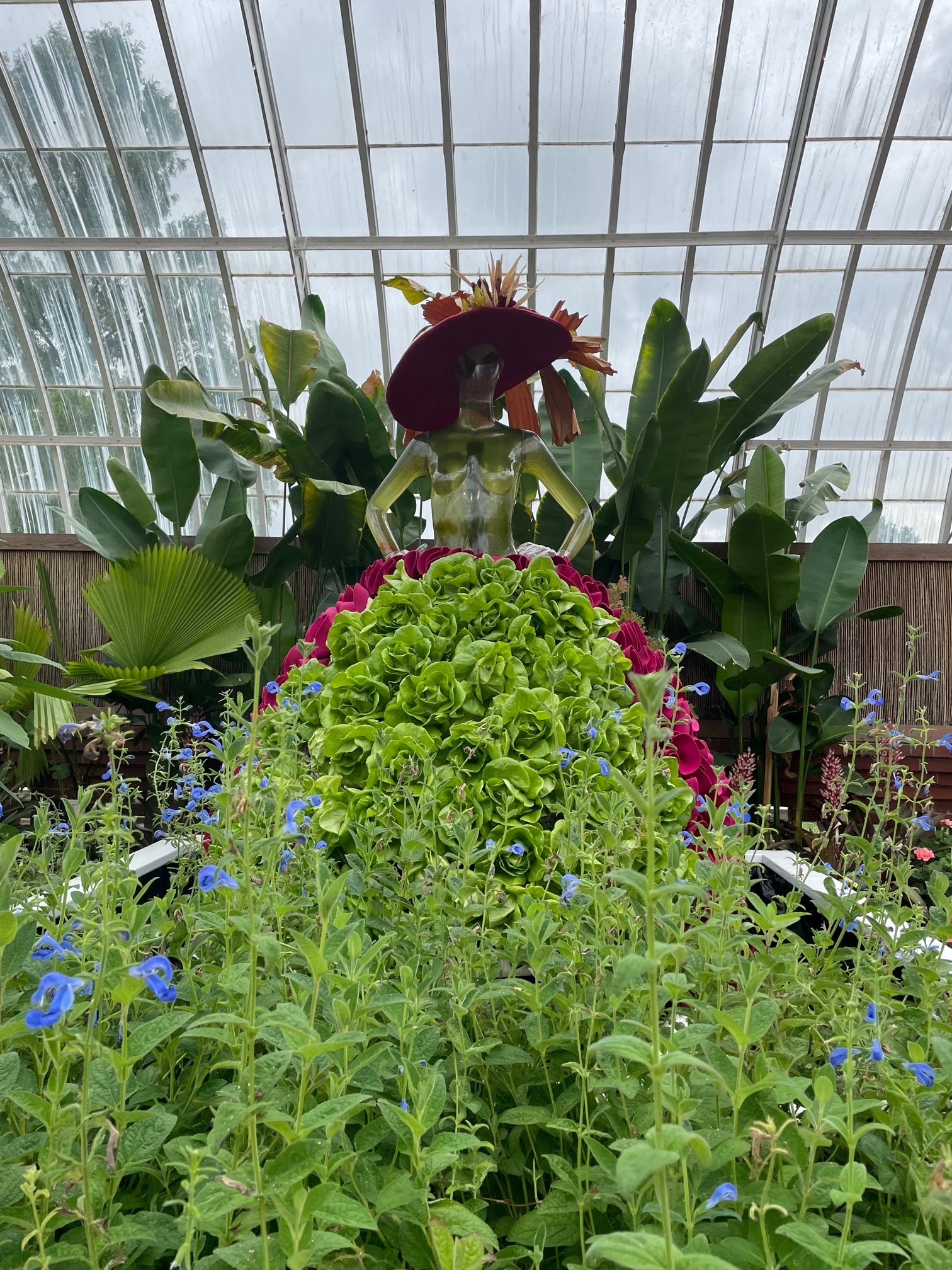 Select photos © Paul g. Wiegman, Paul Vladuchick, Phipps staff
Select photos © Paul g. Wiegman, Paul Vladuchick, Phipps staff

